India has allocated Rs 1.72 trillion, or 27.67 per cent of the total defence budget to cater to modernisation of the country's arsenal.
Modern militaries spend up to 50 to 60 per cent of their total defence budget so that they go into combat with superior weaponry and equipment.
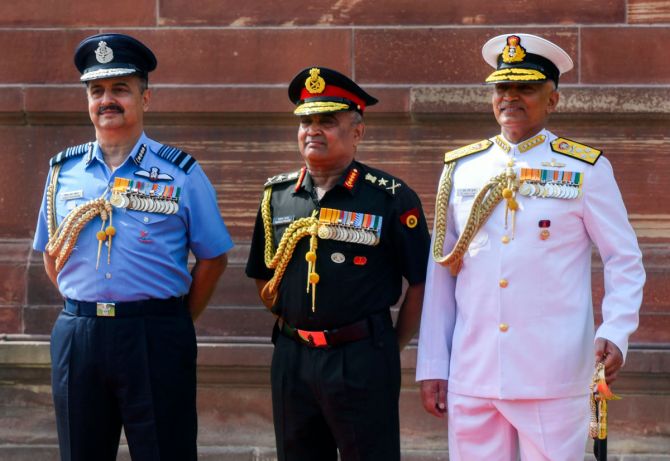
The ministry of defence (MoD) this year presented the capital allocations for the defence budget in a new format, combining the capex budget for all three services into a single allocation, rather than allocating budgets for all the three services separately.
As a result, Demand No. 21, pertaining to the 'Capital Outlay on Defence Services' does not give out separate figures for each service -- the army, navy and air force.
The only way to estimate the capital allocation for each service is to calculate the allocations to each service over the preceding decade.
Then, by assuming that a similar percentage of capex funding would be distributed among the three services this year, it can be broadly estimated what each service would be allocated in the coming financial year.
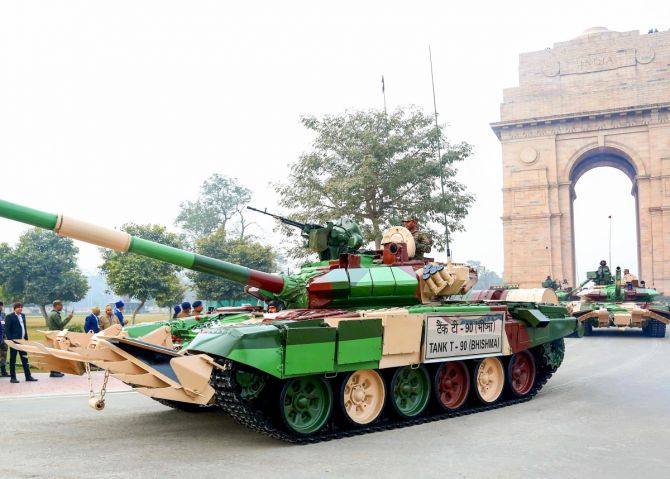
By such a calculation (see chart 1), it can be seen that over the preceding decade, the army has been allocated an average of 28 per cent of the defence capital budget, the allocation to the navy has been 31 per cent on average and the air force has been getting 41 per cent.
Applying this proportion to the coming year's capex allocation of Rs 1.72 trillion, it is seen that the share of the army (28 per cent) amounts to Rs 48,160 crore (Rs 481.60 billion), that of the navy (31 per cent) comes to Rs 53,320 crore (Rs 533.20 billion), while the 41 per cent share of the air force comes to Rs 70,520 crore (Rs 705.20 billion).
It requires to be noted that the calculated shares of the three services actually vary substantially.
The army's share has varied over the last decade between 19.5 and 37 per cent; the navy's between 24.5 and 37 per cent, while the air force has been allocated between 33 and 48 per cent.
Another important set of figures that are ignored in the Union Budget are the capital requirements that are projected by each of the three services.
Consequently, it remains unknown whether the financial allocations substantially meet the projected requirements of the army, navy and air force or not.
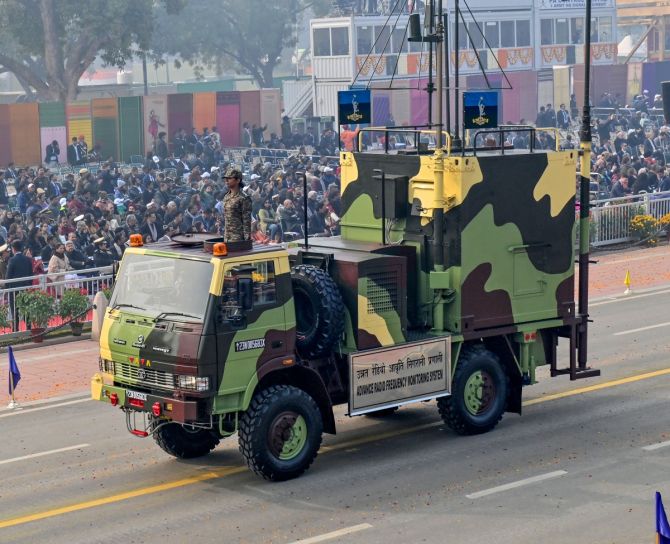
Broad defence allocations
The government's priorities in defence readiness became evident from its distribution of funds in the interim Union Budget presented in Parliament on February 1.
From the Rs 6.21 trillion allocated to the MoD -- a higher allocation than any other ministry -- more than half will be paid towards personnel costs.
This included 30.68 per cent that was allocated towards salaries and allowances for serving soldiers, sailors and airmen. Another 22.72 per cent was earmarked for defence pensions.
From what remained, 14.82 per cent was allocated for revenue expenditure: The cost of keeping the military running and operationally prepared.
About 4.11 per cent was spent on civil organisations that work under the MoD such as the Coast Guard and the Border Roads Organisation.
That left Rs 1.72 trillion, or 27.67 per cent of the total defence budget -- under the capital expenditure (capex) head, to cater to modernisation of the country's arsenal.
Modern militaries spend up to 50 to 60 per cent of their total defence budget on capex so that they go into combat with superior weaponry and equipment.
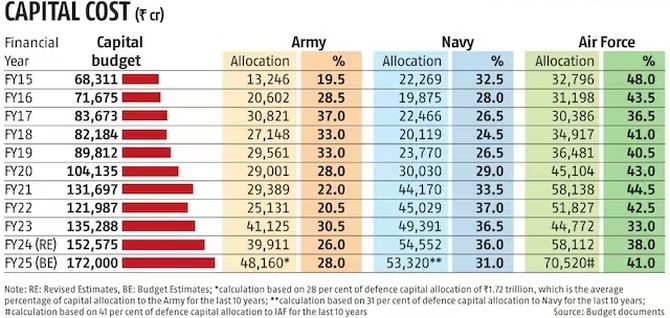
However, India's army maintains about 1.25 million ground soldiers in the personnel-heavy structure that sucks up more than half the defence allocations into paying salaries and pension to a large number of troops posted on our Himalayan borders in the north.
This payment has a skewed framework, with the army paying over 80 per cent of its budget on personnel costs (salaries + pensions), while the navy and air force pay about 10 per cent each.
Military planners say that they inform the ministry of finance about their requirement of funds for the Budget, but those funds are seldom allocated.
The 37th report of the 17th Lok Sabha's Standing Committee on Defence, which was presented in both Houses of Parliament, states that in FY19, the finance ministry allocated just 52 per cent of the services' capex projection.
Subsequently, this allocation rose year by year to 59 per cent, 63 per cent, 61 per cent and 68 per cent.
This was until the 2023-2024 Budget saw an allocation of 100 per cent of the services' projections.
A Business Standard analysis of defence capital allocations during the preceding decade reveals that capex has risen by barely 5 per cent in real terms each year, in the last decade.
This is after accounting for inflation and foreign exchange rate variation (FERV).
This 5 per cent rise in the military's modernisation budget trails the growth in gross domestic product (GDP), which has risen at 6 to 8 per cent annually for that period.
Twice during this period, in 2012-2013 and 2015-2016, the adjusted capital budget was lower than the previous year's allocations.
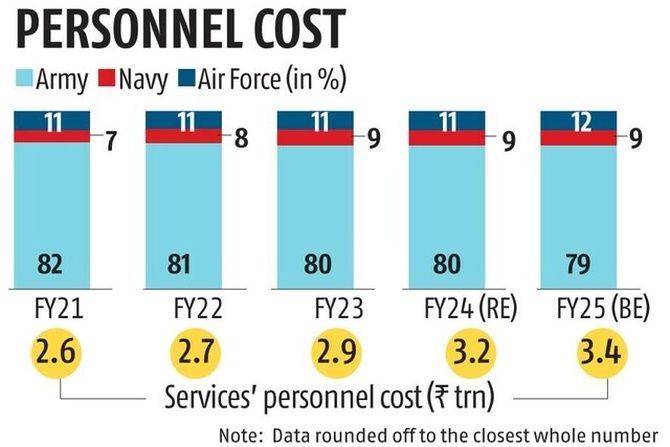
There were large hikes of 23.38 per cent (in 2009-2010) and 18.98 per cent (in 2010-2011) during the first two years of the second United Progressive Alliance government.
Eating into the real value of the defence capital allocations are expenditure such as GST, customs duties and rising personnel costs.
In stores (tents, clothing, ammunition) GST is 18 per cent. On vehicles, it is 28 per cent. But no allocation was increased to cater to these expenditures.
During the UPA government (2004-2014), two divisions of defensive troops were raised, along with a 'strike corps' for the northern borders.
The current Bharatiya Janata Party government tried to slow this expansion but a full division worth of manpower had already been raised.
Similarly, the Chinese ingress into Eastern Ladakh in the spring of 2020 created pressure on the military for a counter-deployment.
Feature Presentation: Rajesh Alva/Rediff.com











